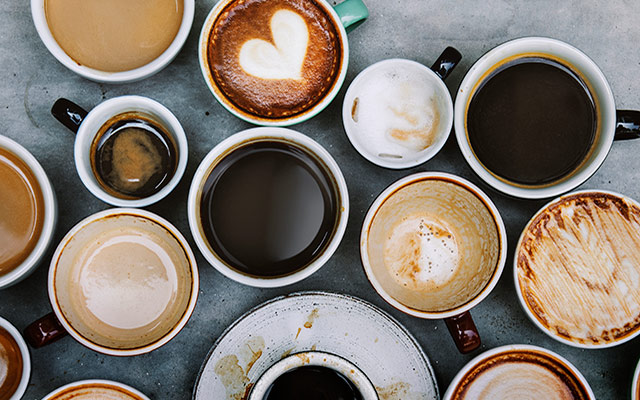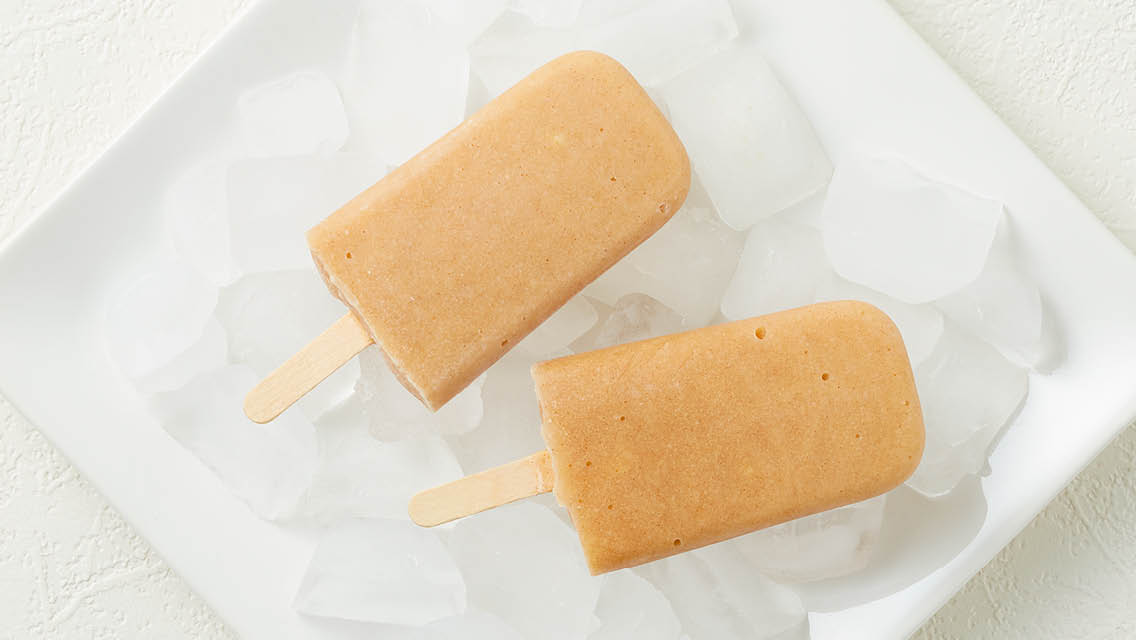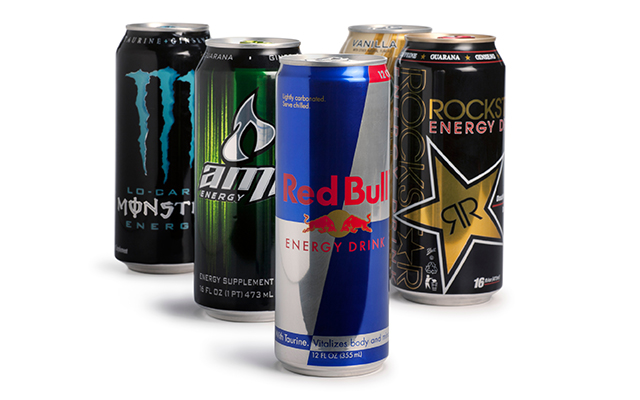Coffee is the cattle prod of beverages. The very aroma is enough to coax most people out of bed in the morning, and millions of Americans rely on java’s jolt to ramp up their energy and propel them through the workday. Collectively, we drink an astounding 400 million cups of coffee a day in this country.
Coffee presents a conundrum for the body, however.
On one hand, the brew brims with free-radical-fighting antioxidants, which helps explain its protective, anti-inflammatory effect against everything from type 2 diabetes to heart disease. Caffeine itself, which is a nervous-system stimulant, leads to sharper focus and enhanced concentration, and it can brighten a bad mood. (Check out the pros and cons of caffeine here.)
“For some individuals, caffeine is something of a miracle drug,” says Daniel Evatt, PhD, a researcher in the department of psychiatry at the Johns Hopkins University School of Medicine in Baltimore. “These individuals report several benefits with minimal negative effects. However, other caffeine users can develop a bad relationship with it, consisting of unpleasant withdrawal symptoms and other problems, such as sleep difficulties and anxiety.”
That’s the catch. Coffee came by the nickname “jitter juice” honestly. Ingest too much caffeine and a pleasant buzz can nosedive into restlessness, nervousness, insomnia and even muscle twitching. The effect is so reliable, says Laura Juliano, PhD, a caffeine researcher at American University in Washington, D.C., that researchers who study anxiety use caffeinated coffee to incite feelings of anxiousness in study participants.
But not everyone responds the same. A small cup of coffee leaves some people feeling twitchy while others can down a pot without batting an eye. Body weight, age, gender and even genetics may factor in to how the body metabolizes caffeine, says Evatt. Which is why coffee’s vice-and-virtue story is comparable with red wine and chocolate — satisfying substances that are healthy and that attract enthusiasts, but require sensible consumption.
Here’s what the experts say about squeezing the health benefits from the bean without getting burned.
Up Your Antioxidants
Coffee is the single greatest source of antioxidants in the American diet. Ounce-for-ounce, other foods, such as blueberries, pecans and even cinnamon, pack more antioxidants than coffee, but they aren’t nearly as popular.
On average, coffee drinkers down 3.4 cups a day, gleaning 40 percent of their daily antioxidants from the brew. (In comparison, fruits and vegetables account for just 23 percent.) The number is high partly because people drink so much coffee, but it’s also because the beverage is brimming with polyphenols, a type of antioxidant found in many vegetables and berries.
Polyphenols confer some serious health benefits. In particular, they destroy free radicals, which are rogue molecules that create inflammation. Unchecked inflammation underlies many chronic illnesses, such as heart disease and type 2 diabetes.
The more antioxidants in the diet, the less inflammation in the body, says John Hibbs, ND, a senior clinician at Bastyr University in Kenmore, Wash. “A cell that can control intracellular inflammatory processes is going to survive better under the duress of daily living.” (For people who prefer “unleaded” java, the good news is that decaf coffee has just as many antioxidants as the “leaded” version.)
Deter Diabetes
New data reveals that one of coffee’s unexpected benefits may be helping to prevent type 2 diabetes, a disease predicted to affect one in three Americans by 2050, according to estimates from the Centers for Disease Control and Prevention.
Rob van Dam, PhD, a nutritionist at the Harvard School of Public Health, led one of the largest research projects to date — a meta-analysis of nine cohort studies with nearly 200,000 participants — and found that subjects who drank six or more cups of coffee a day lowered their risk of developing type 2 diabetes by 35 percent. Granted, that’s a lot of coffee, potentially enough to trigger negative side effects in some. But those who drank between four and six cups daily still had a 28 percent risk reduction, and other studies have shown a significant benefit with just one cup a day. “The important point is that when all the evidence is weighed, the benefit isn’t restricted to those who drink the most,” van Dam says.
It’s worth noting that caffeine is not the magic ingredient here, since decaf drinkers enjoy the same diabetes-thwarting benefit. At this point, the mechanism of that benefit isn’t clear. Some think a substance in coffee called chlorogenic acid slows the release of glucose into the bloodstream. Others hypothesize that it’s the beverage’s antioxidants that help regulate the body’s sensitivity to insulin. “It’s all a bit speculative at this point,” says van Dam.
Keep in mind, too, that studies showing health benefits for type 2 diabetes and beyond are based on coffee that’s black or with only a little milk or sugar — a far cry from the frothy, milky, super-sweet concoctions sold in many cafés today. “People may not realize that having a beverage like that could lead to weight gain,” says van Dam, “which could in turn increase the risk of type 2 diabetes, and that’s a major concern.”
Rustproof Your Heart
Like wine, coffee confers heart benefits. When researchers looked at more than 27,000 women in the Iowa Women’s Health Study, they found that coffee drinkers (one to three cups a day) lowered their risk of heart disease by 24 percent compared with their non-coffee-drinking peers. Women who drank four to five cups a day were 33 percent less likely to die from any inflammatory disease.
Again, the beneficial ingredient is most likely the antioxidants. The foundation of heart disease is inflammation of the blood vessels, which is instigated and propagated by free radicals. And nothing combats free radicals better than antioxidants.
“Coffee delivers a whole host of antioxidants that essentially prevent you from rusting from the inside out,” says James O’Keefe, MD, a cardiologist at Saint Luke’s Hospital in Kansas City, Mo.
For people with high cholesterol, however, there is a caveat. Coffee contains two oily substances — cafestol and kahweol — that can raise blood levels of low-density lipoprotein (LDL, the “bad” cholesterol). The oils are released when beans are brewed, and they easily pass through the metal filters used in French press and stovetop espresso pots. Paper filters, on the other hand, which are used in drip coffee machines, trap the substances before they hit the cup, virtually eliminating any risk of an uptick in cholesterol.
Buffer Your Brain
The caffeine in coffee could also safeguard your noggin. Consider coffee’s impact on depression — a scourge that affects millions of Americans. Data from the Nurses’ Health Study shows that rates of depression lower in lockstep with the amount of coffee consumed. Compared with those who drank no more than one cup of coffee a week, women who drank four or more daily cups experienced depression 20 percent less often.
Since drinkers of decaf suffered from the blues just as often as people who didn’t drink coffee at all, scientists suspect caffeine is the blues buster.
Exactly how the substance fights depression is not well understood, but it is known that when it enters the brain, caffeine changes levels of chemical messengers such as serotonin and dopamine, which are linked to feelings of joy and enthusiasm, says Michel Lucas, PhD, RD, a research fellow at Harvard School of Public Health. “Caffeine increases your energy levels and feelings of wellness, two things that can have an impact on depression.”
Studies also show a 30 percent reduced risk of developing Parkinson’s disease among coffee drinkers, for similar reasons. That’s because Parkinson’s is caused by the loss of brain cells that make dopamine, a chemical instrumental in movement and fine motor control.
Caffeine Overload?
Regardless of the benefits, of course, you can drink too much of a good thing. Caffeine, like nicotine and amphetamines, can be highly addictive. Regularly drinking 100 milligrams (the amount in 6 ounces of drip coffee) is enough to create a physical dependence. “It acts on the motivational brain mechanisms that make you want to use more, regardless of how it makes you feel,” says Evatt. (For more on addiction, go to “One Cup at a Time,” below.)
If you’ve ever overindulged in caffeine, you know that it can make you feel pretty crummy. That’s because excess caffeine goads the adrenal glands into releasing stress hormones, like adrenaline and cortisol, that can put the brain and body into a panic-like state.
That’s not just unpleasant, it’s unhealthy. “The more caffeine you have onboard, the more often you trigger the body’s emergency response system,” says Jacob Teitelbaum, MD, a board certified internist and author of Beat Sugar Addiction Now!. “And, if I keep setting off the siren every 10 minutes, I’m going to burn out.”
Caffeine’s artificial energy boost can also distance people from their natural energy rhythms, says Elson Haas, MD, founder and director of the Preventive Medical Center Marin in San Rafael, Calif., and coauthor of The Detox Diet, Third Edition. Caffeine’s false-energy effect can encourage people to overdo, and dissuade them from taking recovery breaks when they should. “Pretty soon you’re both wired and tired,” he says.
Over time, the adrenal glands may not make enough cortisol to maintain a baseline of energy, a condition referred to as adrenal fatigue. “You are pushing on an organ that doesn’t have the reserves to respond to the stimulant anymore,” Haas says.
Decaf seems like an obvious way to deal with jitters, but the safety of the standard decaffeination process worries some health-conscious consumers. To strip the caffeine from the bean, most coffee companies use chemical solvents, such as methylene chloride or ethyl acetate. The solvents are rinsed away at the end of the process, but if you are concerned about chemical residue, look for companies selling coffee decaffeinated via the Swiss Water Process, which uses water instead of chemicals. (For more on decaf, see “Pass the Decaf,” below.)
The best way to avoid long-term complications is to experiment with how you can enjoy caffeine without overdoing it. People metabolize caffeine differently, notes Hibbs. “Constitutionally, we are all different,” he says, “and certain people are more susceptible to the negative effects than others.”
So, if you’re not a fan of the brew, don’t feel compelled to join the coffee club. Although their exact compounds vary, green and black teas also have high levels of antioxidants.
If you really enjoy your java, though, don’t fret. In tandem with healthy sources of energy, such as nutritious food, regular exercise and restful sleep, you can enjoy that caffeine boost.
“Feed your body, use your body, rest your body and do things you love” is Teitelbaum’s mantra. “And, if you need a little boost,” he adds, “a cup of coffee is perfectly reasonable.”
The Buzz
Caffeine is the world’s most popular drug. Here’s how its dosage stacks up in natural sources, such as coffee and tea, and in less-than-natural products, such as soft drinks, energy drinks and stimulants.
| Product | Size | Milligrams of Caffeine |
| Drip coffee | 6 oz. | 100 |
| Espresso | 1 oz. | 40 |
| Instant coffee | 6 oz. | 70 |
| Decaf coffee | 6 oz. | 4 |
| Green tea | 6 oz. | 30 |
| Soft drink | 12 oz. | 40 |
| Red Bull | 8.3 oz. | 80 |
| NoDoz | 1 tablet | 200 |
Amounts are approximate and cary by product and growing method. Download a jpg of the chart.
One Hot Energy Drink
In athletes, caffeine is one of the few legal drugs scientifically proven to boost performance. It mobilizes fat stores, freeing up energy for hard-working muscles. It also draws more calcium into muscles, thereby strengthening their contraction. And it triggers the brain to release endorphins, which raises a person’s pain threshold. If you’re worried about dehydration, don’t be. The notion that caffeine causes the body to lose precious water stores has been widely refuted by studies showing caffeine has no negative impact on hydration.
Coffee Bean Primer
Coffee drinkers used to have one decision to make: regular or decaf. But the rise in gourmet and specialty coffees demands that we all become coffee connoisseurs. When faced with a choice of beans, here are a few basics to keep in mind:
Bean: The two most commonly used coffee-plant varieties are arabica and robusta. Arabica beans are considered by many to be more flavorful; hence they are more expensive and often used in gourmet coffees. The less expensive robusta beans are used primarily to make instant coffee and have roughly twice the caffeine as arabica.
Roast: Darker roasts, like French, contain less caffeine than lighter roasts because some of the caffeine burns off during the roasting process. Roasting also degrades the polyphenol antioxidants. So, if you are looking for a bigger kick, choose a lighter roast.
Grind:Generally, the finer the grind, the more caffeine you will extract. Whether you want a fine or coarse grind, though, depends on how long the water will be in contact with the beans. If it’s just a few seconds, like espresso, a finer grind maximizes contact between water and the surface area of the beans. If it’s a few minutes, like a French press, a coarser grind ensures a smooth, mellow cup. Espresso packs less caffeine per serving than drip coffee, but espresso will give you a quicker buzz if you drink it in one or two gulps, like many do.
Aroma: Coffee’s aroma is both distinctive and alluring. In one study, just the smell of coffee was enough to increase people’s typing speed. Roasted coffee beans contain roughly 800 aromatic compounds. As with wine, coffee’s aromatic compounds — and, therefore, its flavor — are heavily influenced by geography. Elevation, moisture and temperature are just three examples of what makes coffee grown in Central America taste different from coffee grown in East Africa.
Pass the Decaf
Not everyone can tolerate caffeine. The jolt to the central nervous system can exacerbate stress, anxiety and insomnia. Caffeine also amps up the stomach’s production of gastric juices, so coffee can cause heartburn or worsen symptoms of irritable bowel disease. Babies lack an enzyme needed to metabolize caffeine, so lactating women are advised to nix the habit.
Some research even links caffeine to an increased risk of miscarriage, so pregnant women are also advised to take a pass. The good news is that decaf coffee contains most of the same health properties as regular. The bad news is that it’s not completely caffeine free. In the United States, 97 percent of the caffeine must be eliminated for coffee beans to be labeled decaffeinated. Drink enough decaf, and you’ll still get a little buzz. If you do choose decaf, be sure to opt for one that has been decaffeinated without chemical solvents.
One Cup at a Time
Health benefits notwithstanding, it’s important to remember that coffee can be addictive. Most coffee drinkers ingest an average of 300 to 400 mg. of caffeine a day. “For many people, the daily use of caffeine is fueled by a desire to avoid withdrawal,” says Laura Juliano, PhD, a caffeine expert at American University in Washington, D.C. “Once you are dependent it, you may be in pretty bad shape without it.”
The most common complaint of caffeine withdrawal is headaches. Inside the brain, caffeine plugs into receptors meant for the neurotransmitter adenosine. When adenosine is unfettered, the body relaxes, as widening blood vessels up the flow of oxygen to cells. When caffeine elbows adenosine out of the way, blood vessels constrict and you feel wired. Worse, once you are addicted, if you deprive your brain of caffeine, the blood vessels in your head will dilate and the rush of blood to the brain causes a pounding headache. The misery can last anywhere from 24 hours to nine days.
Other signs of caffeine withdrawal include fatigue, irritability, trouble concentrating and flulike symptoms. To lower the likelihood and severity of withdrawal symptoms, cut back gradually by curbing your intake 10 to 25 percent every few days.
This article has been updated. It originally appeared in the October 2012 issue of Experience Life.




This Post Has 0 Comments